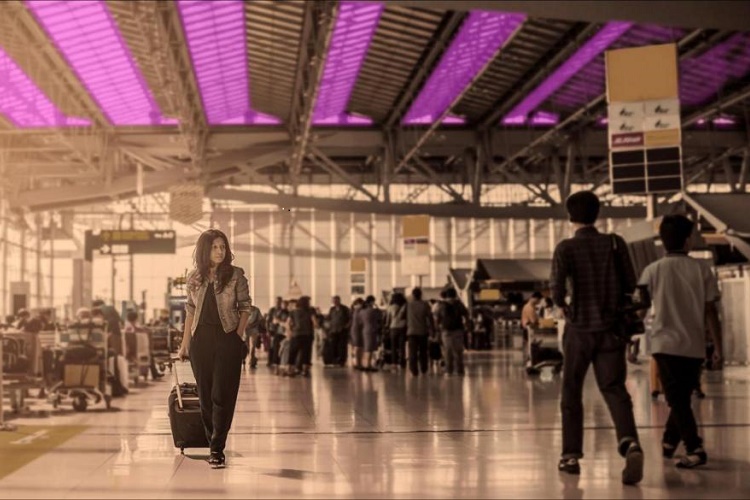Ultraviolet light has bright future in fight against Covid-19

A particular type of ultraviolet light known as far-UVC could be safely used for air disinfection in public places without harming people, according to new research carried out jointly at the University of St Andrews and Ninewells Hospital in Dundee.
This research is very timely as the world looks for new ways to disinfect rooms and help eliminate the Covid-19 coronavirus.
In the research, accepted for publication in the journal Photodermatology, Photoimmunology and Photomedicine, the St Andrews-Ninewells team used computer simulations to study the impact of far-UVC lamps on human skin and have shown the wavelengths that do not cause the kind of problems typically associated with ultraviolet light.
There are three types of ultraviolet light – UVA, UVB and UVC – all of which have the potential to damage human skin.
Isla Barnard, a medical physics PhD student at St Andrews, said: “The Earth’s atmosphere protects us by absorbing all the UVC from the Sun, and we must be very careful to protect ourselves from some existing UVC disinfectant lamps which are known to cause skin damage.
“Using our computer model, we have shown that longer UVC wavelengths can damage the skin whilst wavelengths shorter than 230nm had much more limited penetration in the skin.”
UVC light from special germicidal lamps with wavelengths in the range 200nm to 280nm kills germs such as bacteria and viruses and has been used as a means of disinfecting hospital wards and operating theatres for decades. However, the wards must be empty of people because the germicidal lamps operate mainly at a wavelength of 254nm that can penetrate the eyes and skin, causing inflammation and pain.
Far-UVC lamps that emit at wavelengths around 222nm may be safer because proteins in the skin efficiently absorb this light and provide a natural protective barrier.
The computer codes at the heart of this work were originally developed by St Andrews astrophysicist Dr Kenny Wood and have been adapted to help treat patients.
Dr Wood said: “Over the last decade we have built an interdisciplinary collaboration with photobiologists at Ninewells. Together, we have a strong track record in using computer simulations for testing optical and ultraviolet lamps and optimising light-based therapies for skin cancer and other diseases.”
Dr Ewan Eadie of the Photobiology Unit at Ninewells Hospital said: “Our new simulations provide further support for existing laboratory research showing that the upper layers of the skin provide a natural protection against shorter-wavelength-UVC.
“Lamps that are engineered to filter out ultraviolet wavelengths longer than 230nm are safer than existing germicidal lamps. We now require real-life in-person studies to support our computer simulations and the laboratory evidence.”
Lamps that emit at the shorter 222nm wavelength are now being investigated worldwide as a means to help eliminate the virus responsible for the current Covid-19 global pandemic.
The St Andrews-Ninewells team is working with several other groups developing far-UVC lamps and their computer simulations are being used to ensure they are safe for human skin.
Image courtesy of Columbia University Center for Radiological Research.
Please quote the paper's DOI in all references: doi.org/10.1111/phpp.12580
Issued by the University of St Andrews Communications Office.